If you were looking for Christmas cookie recipes, then do not leave this article. Here we will show you how to make one of the most popular Spanish cookie recipes.
We are talking about the famous Spanish almond cookies, which combine the best Spanish flavors and are also the perfect cookie recipe to make during the winter.
From how to make them step by step, to other storage and serving tips, here you will learn everything you need to know to make this recipe and have delicious Spanish cookies as a result.
![Spanish almond cookies on a white plate, on a wooden table. Easy Spanish Almond Cookies - [ Alemandros ]](https://visitsouthernspain.com/wp-content/uploads/2022/12/spanish-almond-cookies-on-a-white-plate-on-a-wooden-table.-.jpg)
You, dear reader, support this blog. If you purchase through a link, we earn a small commission. As an Amazon Affiliate, we earn from qualifying purchases.
Background of the Dish
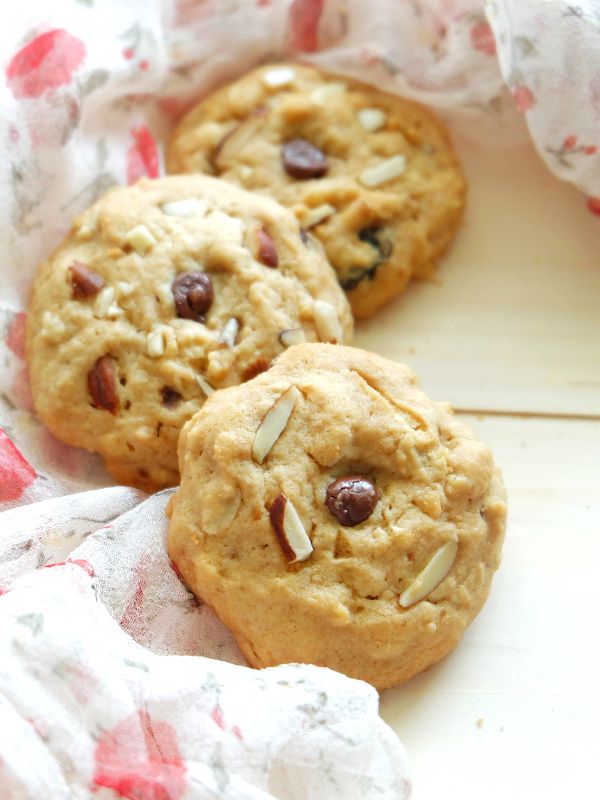
In the land of the best Spanish desserts, where they must compete against other fantastic cookies such as the Spanish chocolate chip cookies or the Spanish sugar cookies, it is not easy to stand out, but the almond cake manages to do it.
The almendrado is the original name of these cookies (not to be confused with the Spanish almond cake), which originated in the Andalusian region.
It was a recipe created by the Jews of the area, so it belongs to Sephardic cuisine.
Today it spread to the entire region and even to other areas of Spain. You can buy it at any bakery but it’s better to take the leap and cook it yourself.
Pin for Later!
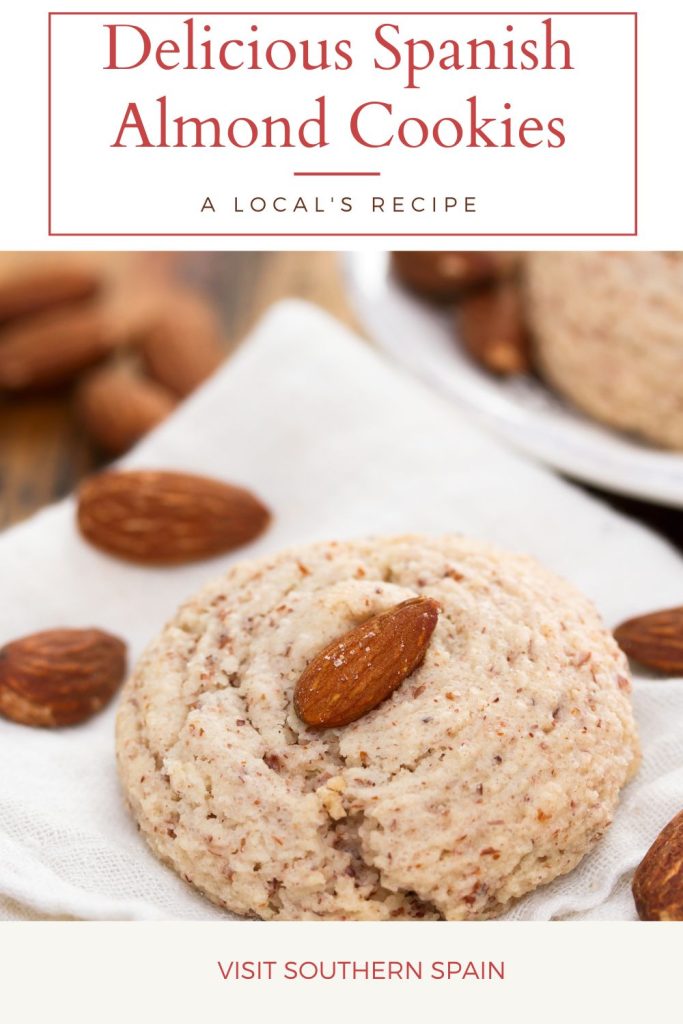
Things You’ll Need for Spanish Almond Cookies
To make this Spanish biscuit you just need sugar, almond, flour, and eggs. The equipment is just a large bowl, and have your fridge ready for the cooling process.
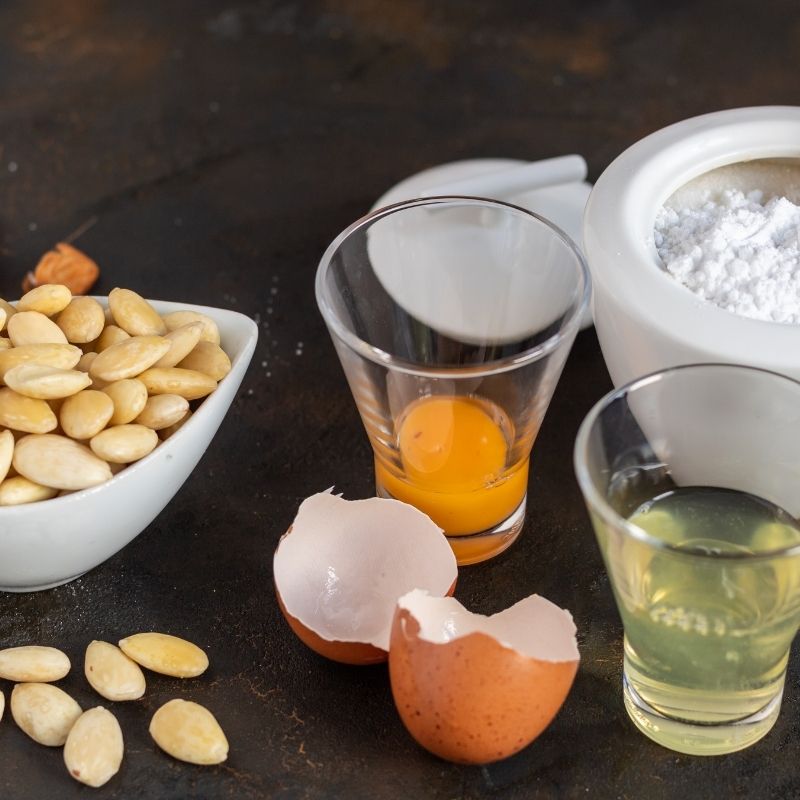
Ingredients
- 1 1/2 cups (200 gr) flour
- 1 teaspoon baking powder
- 1 1/4 cups (125 gr) ground almonds
- 1/2 cup (125 gr) white sugar
- 1/2 cup (125 gr) butter (at room temperature)
- 2 eggs (one is for the external coating)
- Laminated almonds or regular almonds (to decorate)
How to Make Spanish Almond Cookies – Step by Step Guide
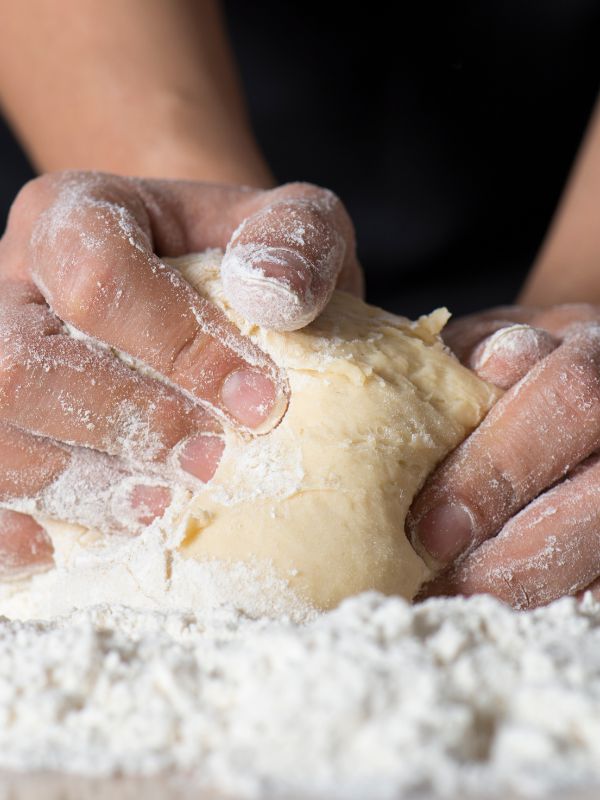
- The first step in this Spanish cookies recipe is to grab a large bowl and get ready to mix the dry ingredients. In this case, it means that you have to mix the flour (better if it is sifted), with the baking powder and ground almonds.
- Then you have to make a hole in the center (like the shape of a volcano), to add the rest of the ingredients (sugar, butter at room temperature, and 1 egg). Mix everything until it forms a uniform dough.
- Make a ball and wrap it in plastic wrap. Let it rest for 30 minutes in the fridge. If it’s very hot outside, you can leave it in the freezer to ensure that this process will work.
- Next, put the dough between plastic wrap or baking paper, pass the rolling pin to stretch it, and leave it with a thickness of approximately 1cm or less. Putting it between the plastic wrap or baking paper to pass the rolling pin is key because it is a sticky dough, and you shouldn’t add more flour unless it is essential.
- After that, put the stretched dough for 10 more minutes in the fridge. This will give them the perfect texture to hold shape later in the oven.
- Cut the cookies in the desired shape (better if it is with a cookie cutter or round glass so that it has the perfect shape).
- Put them on a tray with parchment paper carefully and leave a space between the cookies. If you can’t fit all at once in the oven, then place them in separate trays and take one of the Spanish biscuits trays to the fridge as it waits.
- Preheat the oven to 200ºC (390°F or hot oven), with the heat function up and down if your oven has it (if it doesn’t you don’t have to worry, you will still have delicious almendrados).
- Now beat the egg that you are going to use for decoration and paint the cookies, then put the laminated almonds on top of the cookies.
- After that, bake the cookies for 10 to 12 minutes. Once they start to get a golden brown color, take them out of the oven (the time will depend on each oven, so keep an eye on them).
- Finally, let them cool on a rack. Serve this Spanish cookie when they reach room temperature or cool down completely.
Substitution of Ingredients
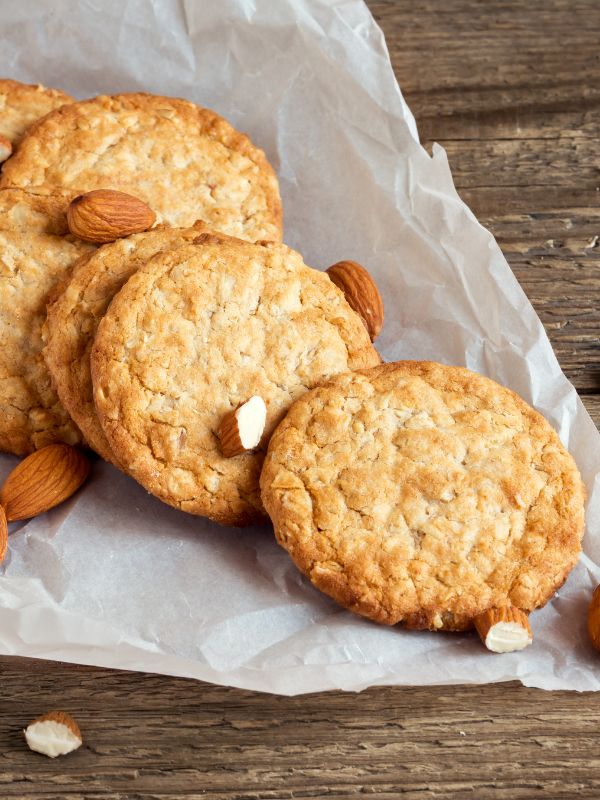
Like other Hispanic desserts, there is some room to make changes to the ingredients, although not much.
What gives it the characteristic flavor are almonds, butter, sugar, and flour so you should not change them.
However, you can use brown sugar instead of white sugar. It will give the cookie a browner color, and a less sweet taste.
Other than that, you can try making it with gluten-free flour, but the texture will be harder and crumblier.
While other Spain desserts can be made with olive oil instead of butter or use lard, you can’t do this with these cookies.
It may be a tempting change, but Spanish almond cookies are made with shortening to ensure just the right texture and flavor.
if you like almond desserts, you absolutely must try the Spanish almond soup, that contrary to what you expect, it’s a sweet milk soup flavored with cinnamon and lemon.
Tips on Serving Spanish Almond Cookies
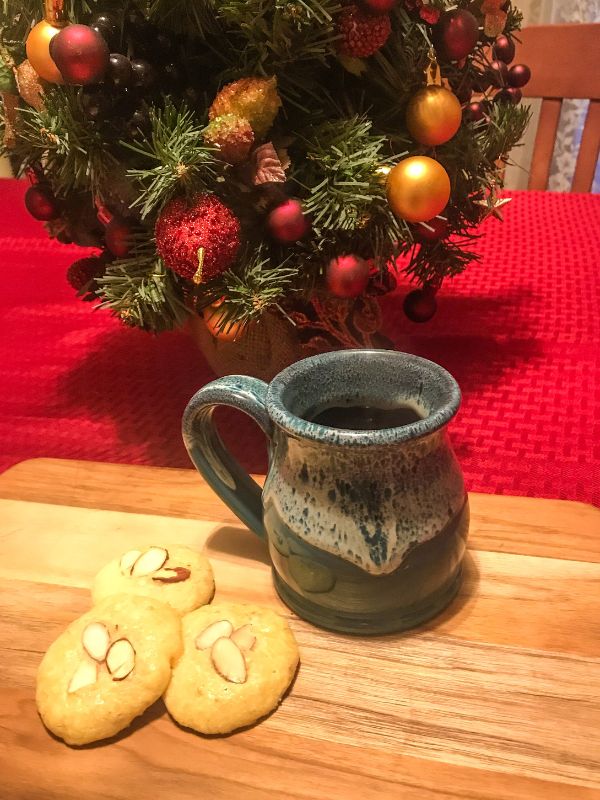
What makes this almond recipe one of the most popular cookies is that you can serve it as a dessert, but it is also a great breakfast or afternoon snack.
You can serve it accompanied by a good Spanish hot chocolate or tea (it goes perfectly with cinnamon tea).
If you plan to prepare it for Christmas or any winter holiday, there is nothing better than serving it together with other Spanish sweets such as Alfajores or Buñuelos de Viento.
You can also serve them as cookies with powdered sugar, just coat them with some of it on top (like you would do with the mantecados, for example).
It wouldn’t be the classic way, but the flavor will be great.
How to Store Spanish Almond Cookies

If you make these popular cookies, the good news is that you can save them for a long time and in a variety of ways.
The simplest is to store the Spanish almond cookies at room temperature for up to 4 days.
If you feel that they have hardened a lot, dip them in milk or tea and you can eat them without problems.
Also, you can freeze the dough before cooking the cookie. There it can last up to 30 days and it is the best option when it comes to freezing them.
Then you let it thaw in the fridge for a couple of hours and cook it in the oven right away.
You can cut the Spanish cookies before freezing them so that later it is not so hard for you.
You should decorate them with the egg and almonds, and put them in the oven without letting them thaw (they will take longer to cook, so you should control them carefully).
Recipe Card: Spanish Almond Cookies
Spanish Almond Cookies Recipe
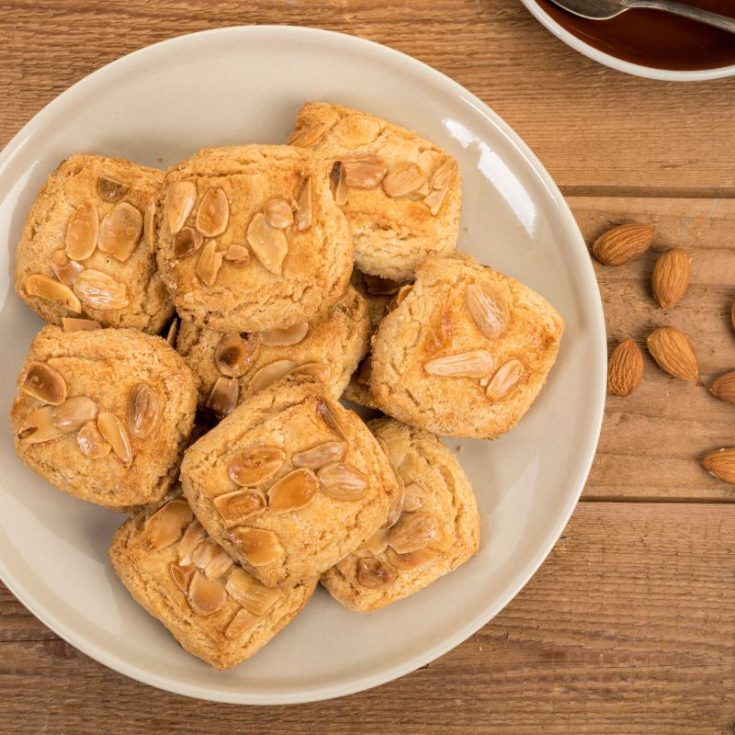
If you were looking for Christmas cookie recipes, then do not lose this recipe.
We are talking about the famous Spanish almond cookies, which combine the best Spanish flavors and are also the perfect cookie recipe to make during the winter.
Here we will show you how to make one of the most popular Spanish cookie recipes.
Ingredients
- 1 1/2 cups (200 gr) flour
- 1 teaspoon baking powder
- 1 1/4 cups (125 gr) ground almonds
- 1/2 cup (125 gr) white sugar
- 1/2 cup (125 gr) butter (at room temperature)
- 2 eggs (one is for the external coating)
- Laminated almonds or regular almonds (to decorate)
Instructions
- In a large bowl mix the flour with the baking powder, and add the ground almonds.
- Then make a hole in the center (like the shape of a volcano), and add the rest of the ingredients (sugar, butter at room temperature, and 1 egg). Mix everything until it forms a uniform dough.
- Make a ball and wrap it in plastic wrap. Let it rest for 30 minutes in the fridge. If it's very hot outside, you can leave it in the freezer.
- Then, put the dough between plastic wrap or baking paper, pass the rolling pin to stretch it, and leave it with a thickness of approximately 1cm or less. It is key to put it between that to pass the rolling pin because it is a sticky dough.
- Put the stretched dough for 10 more minutes in the fridge.
- Cut the cookies in the desired shape (better if it is with a cookie cutter or round glass so that it has the perfect shape). Put them on a tray with parchment paper carefully and leave a space between the cookies.
- Preheat the oven to 200ºC (hot oven), with the heat function up and down if your oven has it (otherwise don't worry).
- Beat the egg that you are going to use for decoration and paint the cookies, then put the laminated almonds on top of the cookies.
- Bake the cookies for 10 to 12 minutes, when they start to brown, take them out of the oven (the time will depend on each oven, so keep an eye on them).
- Let them cool on a rack. Serve when they reach room temperature.
Notes
Like other Spanish cookie recipes, it is essential that the butter is at room temperature and that it is that amount.
It may seem very buttery to you as you mix the dough, but that gives it that classic Spanish almond cookie texture.
If you forgot to bring the shortening out to room temperature before making the recipe, don't panic.
Take it out of its wrapper, put it on a large plate or in a plastic bowl, and heat it for 10 seconds in the microwave. This will make the butter soften but not melt.
Nutrition Information
Yield
8Serving Size
1Amount Per Serving Calories 346Total Fat 21.4gSaturated Fat 9gCholesterol 75mgSodium 18mgCarbohydrates 24gFiber 2.5gSugar 14gProtein 7.1g
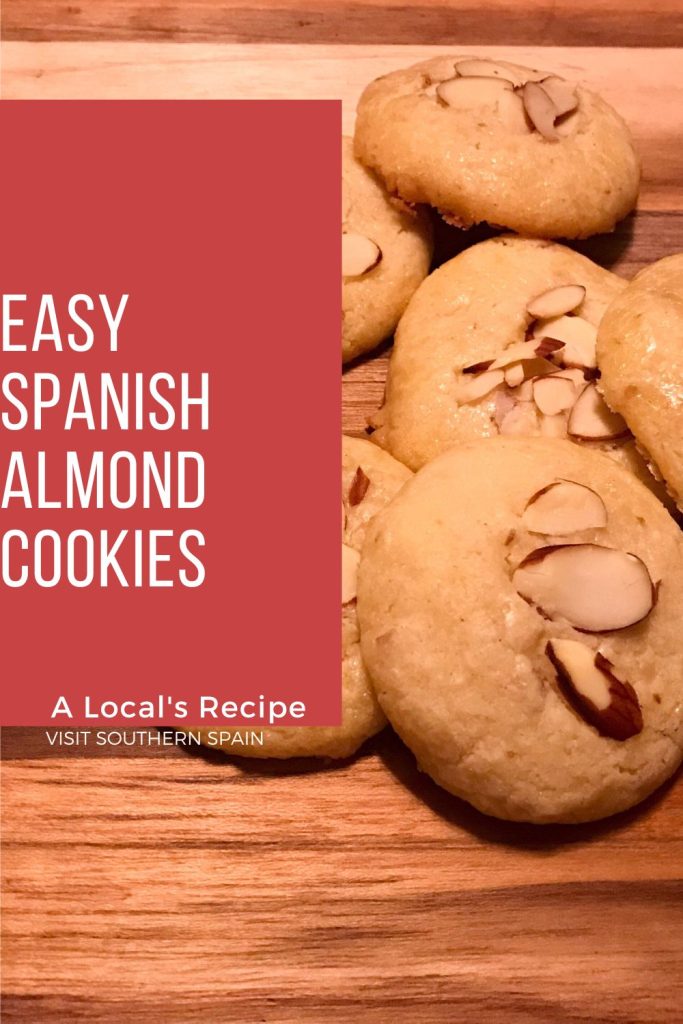
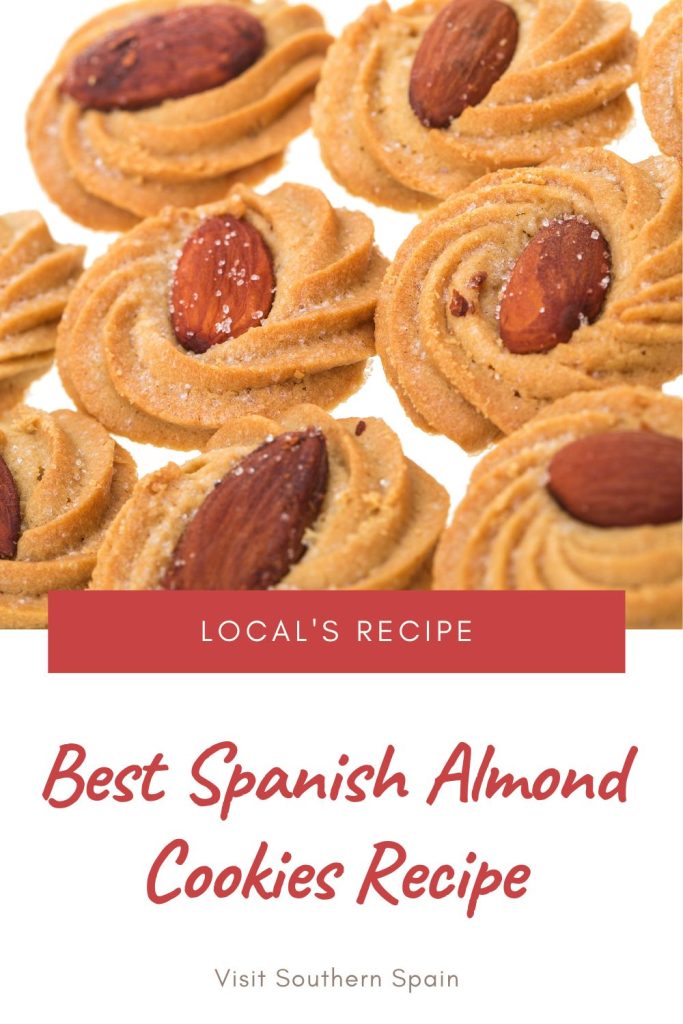

Hola, I’m Paulina! Together with my team, we are passionate about Southern Spain. Here we share all you need to know for great times in Southern Spain with the best places to visit, stay and, of course, the best food to eat.
Let’s dive in and explore Southern Spain’s outdoors, food and culture con pasión!

